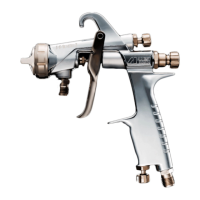
Do you have a question about the Anest Iwata WIDER1 Series and is the answer not in the manual?
| Brand | Anest Iwata |
|---|---|
| Model | WIDER1 Series |
| Category | Paint Sprayer |
| Language | English |
Contains critical warnings and instructions for safe painting operations.
Lists key technical specifications such as pressure, noise, and temperature.
Provides detailed technical data for different spray gun models and configurations.
Details precautions against ignition sources and flammable materials.
Warns against misuse, exceeding limits, and improper handling.
Covers protective gear and health considerations during operation.
Includes warnings against alteration, unauthorized access, and incorrect usage.
Step-by-step guide for connecting air and fluid hoses to the spray gun.
Highlights crucial warnings before performing maintenance and inspection.
Detailed instructions for cleaning and disassembling the spray gun.
Key points and tips for proper maintenance and part replacement.
Identifies critical areas and components for inspection.
Guidelines for when to replace specific wearable parts.
Diagnoses and remedies for various spray pattern issues like fluttering or split.
Identifies causes and solutions for paint leaks from different gun parts.
Addresses issues where paint does not come out or leaks from the air valve.
Provides recommended air pressure, paint viscosity, and spraying technique.
Defines DANGER, WARNING, and CAUTION levels for residual risks.
Illustrates locations of identified risks on the spray gun with corresponding symbols.
Details risks by operational phase, work, location, harm degree, and protective actions.
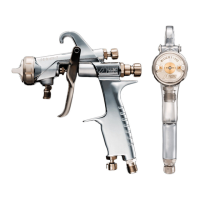
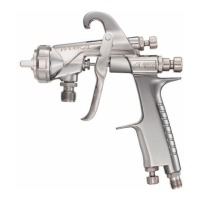
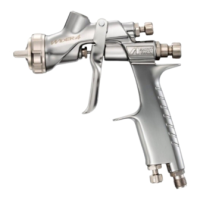
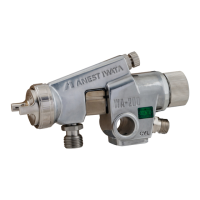
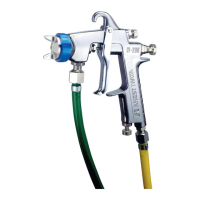
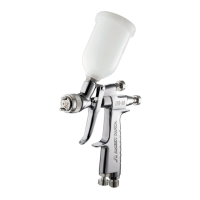
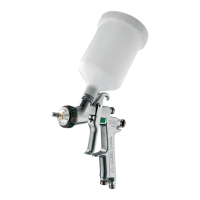

